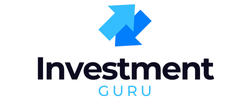Did you know a 10% increase in pricing can greatly boost a freelancer’s profit? This shows how key it is to price your freelance pricing correctly. Finding the right balance between the value you offer and the market rate is essential. It’s a fine line that can either make or break your business.
Creating effective pricing strategies is vital for making the most profit. It’s not just about being cheaper; it’s about showing clients the true value of your work. Remember, “you can only charge what a client is willing to pay.” This emphasizes the need for a careful pricing approach.
Table of Contents
Key Takeaways
- Understand the value you bring to clients.
- Research the market rate for your services.
- Balance your pricing with the perceived value.
- Adjust your pricing strategy to maximize profit.
- Communicate your worth effectively to clients.
Understanding the Value of Your Freelance Work
To price your freelance services right, you need to know the value you offer. This is the base for setting fair rates that show your work’s worth.
Assessing Your Skills and Expertise
Your skills and expertise are key to your value. Look at your strengths and what makes you special to clients. Think about your experience, qualifications, and any unique knowledge you have.
Quantifying the Results You Deliver to Clients
Showing your results is vital to prove your value. You need to measure both tangible outcomes and intangible benefits.
Measuring Tangible Outcomes
Tangible outcomes are the results you can measure, like more sales or better efficiency. For example, a freelance marketer might track campaign success with click-through rates or conversion rates.
Articulating Intangible Benefits
Intangible benefits are the non-measurable good things your work does, like a better brand image or happier customers. Explaining these benefits well is important for your pricing. A freelance designer might talk about how their work boosts a client’s brand, even if it’s hard to measure.
By understanding and sharing both the tangible and intangible value you offer, you can set prices that truly reflect your freelance work’s worth.
The Psychology Behind Effective Freelance Pricing
Knowing the psychology of freelance pricing is key to setting fair rates. It’s not just about numbers; it’s about how clients see your value. You need to understand what makes your work special.
Why Underpricing Hurts Both You and Your Clients
Underpricing can harm your business and clients. It cuts down your earnings and might lower the quality of your work. This can make clients unhappy because their expectations aren’t met.
Overcoming Imposter Syndrome When Setting Rates
Many freelancers feel like they’re not worth charging more. But, it’s important to see your skills and the value you add. Recognizing your strengths helps you set fair rates.
Building Confidence in Your Worth
Being confident in your worth is essential. It means knowing your expertise, the quality of your work, and the results you get for clients. Confidence in your pricing shows you’re worth it.
Understanding pricing psychology and beating imposter syndrome helps you set rates that work for you and your clients. This confidence boosts your professional image and makes your freelance career more rewarding.
Research-Based Approaches to Freelance Pricing
To find the best price for your freelance work, you need to use research-based methods. Look at your industry, competitors, and where you live. These factors all play a part in your pricing.
Analyzing Market Rates in Your Industry
Knowing the current prices in your field is key to setting good rates. You can check out sites like Upwork to see what others charge. This helps you set a fair price for your work.
Evaluating Competitor Pricing Strategies
Looking at how your competitors price can teach you a lot. It’s not just about matching their prices. You also need to understand why they charge what they do. This helps you stand out and explain your prices to clients.
Geographic Considerations for U.S. Freelancers
In the U.S., where you live affects your pricing. Different places have different costs of living. This changes how much you should charge.
Regional Rate Variations
Prices can vary a lot depending on where you are. For example, freelancers in big cities like New York or San Francisco might charge more. This is because living costs are higher there.
Remote Work Pricing Adjustments
Remote work has changed the game for freelancers. You now compete globally but can also work with clients who pay more. Experts say it’s important to think about these changes when setting your prices.

By using these research-based methods, freelancers can price their work well. This attracts the right clients and keeps your business profitable.
| Factor | Consideration | Impact on Pricing |
|---|---|---|
| Market Rates | Industry standards | Competitive pricing |
| Competitor Pricing | Value proposition | Differentiation |
| Geographic Location | Cost of living | Regional adjustments |
Calculating Your Minimum Viable Rate
Setting a minimum viable rate is key when pricing your freelance services. It makes sure your business is profitable and competitive.
Determining Your Business Expenses
To find your minimum viable rate, first list your business expenses. These include things like equipment, software, marketing, and more.
- Office supplies and equipment
- Software subscriptions
- Marketing and advertising expenses
- Professional fees (e.g., accountant, lawyer)
Factoring in Taxes and Benefits
As a freelancer, you handle your taxes and benefits. When figuring out your rate, remember to include taxes and benefits like health insurance.
Taxes: Save a part of your income for taxes.
Benefits: Think about the cost of health insurance and retirement plans.
Setting Your Income Goals
Your rate should also match your income goals. Think about what you need to earn to live well and meet your financial targets.
Creating a Sustainable Financial Plan
To plan financially, balance your expenses, income goals, and market realities. Use a formula to help. Divide your desired annual salary by the number of working weeks and hours.
“You should divide your desired annual salary by 52 weeks, then by 40 hours,” providing a baseline for your hourly rate.
For example, if you aim for $60,000 a year, here’s how you calculate:
- $60,000 / 52 weeks = $1,154 per week
- $1,154 / 40 hours = $28.85 per hour

By thinking about your expenses, taxes, benefits, and income goals, you can set a rate that supports a profitable freelance business.
Profitable Freelance Pricing Models
Choosing the right pricing strategy is key to a successful freelance business. Freelancers have several options, each with its own benefits and challenges.
Hourly Rate Pricing: Pros and Cons
Hourly rate pricing means charging by the hour. It’s simple but has downsides. Clients might worry about costs, as they’re not sure what they’ll pay.
On the flip side, it rewards freelancers for their time. Yet, it might not show the true value they bring to clients.

Project-Based Pricing Strategies
Project-based pricing sets a fixed fee for a project. It’s clear for both sides, encouraging freelancers to work efficiently. This can lead to more money if the project is done fast.
But, it’s important to scope the project well to avoid undercharging.
Value-Based Pricing: Charging for Results
Value-based pricing charges for the value delivered. It’s a win-win, as freelancers earn based on client success. As one source says, “charge based on the value you deliver.”
This model needs a deep understanding of the client’s business and how your work impacts them.
Retainer Models for Steady Income
Retainer models mean clients pay a regular fee for ongoing services. This gives freelancers a steady income and helps build long-term relationships. It’s great for services like content creation or maintenance.
In conclusion, picking the right pricing model depends on your services, client needs, and industry norms. Knowing the pros and cons of each helps freelancers make smart choices to boost their earnings.
Creating Tiered Service Packages
Unlocking higher earnings as a freelancer starts with creating tiered service packages. This method boosts average sale value and client satisfaction. It offers options that fit various needs and budgets.

The Power of Good-Better-Best Pricing
Using a good-better-best pricing strategy helps serve different client groups. Almost everyone buys the middle tier, making it key to your pricing. With three tiers, you can:
- Offer a basic package (good) for those on a tight budget
- Provide a premium package (better) with extra features for those willing to spend more
- Introduce an elite package (best) with top services for those needing full solutions
Upselling and Cross-Selling Opportunities
Tiered packages open up chances for upselling and cross-selling. By showing clients various options, you can get them to upgrade or buy more. This boosts your earnings and strengthens client ties.
Designing Packages That Sell Themselves
To make your tiered packages work best, focus on making them appealing and clear. Use clear and concise language in your descriptions. Make sure each tier’s value is clear. This way, your packages will sell themselves, helping you close deals and grow your business.
Advanced Strategies for Maximizing Your Freelance Pricing
To grow your freelance business, you need to use advanced pricing strategies. These strategies show your value. It’s important to go beyond just setting a rate. You should use techniques that change how clients see and decide on your services.
Implementing Price Anchoring Techniques
Price anchoring is a smart move. It means setting a high initial price to make other prices seem better by comparison. For example, you could offer three packages: Basic, Premium, and Elite. The Elite package is priced high, making the Premium one seem like a better deal.

Using Scarcity and Urgency Ethically
Creating a sense of urgency can push clients to act faster. You can do this by limiting your client base or by giving discounts for a limited time. But, it’s key to use these tactics fairly to avoid stressing clients or creating fake urgency.
“People pay more for a sure thing.” This shows how important it is to show your value and certainty to charge more.
Leveraging Social Proof to Justify Higher Rates
Social proof is key to charging more. By showing your skills and the value you bring, you build trust with clients.
Case Studies and Testimonials
Sharing case studies and testimonials can prove your worth. For instance, a case study about boosting a client’s revenue can be very convincing.
Industry Recognition and Credentials
Highlighting your industry awards, certifications, or credentials can also boost your credibility. This can help you charge more.
| Strategy | Description | Benefit |
|---|---|---|
| Price Anchoring | Setting a higher initial price | Makes subsequent prices appear reasonable |
| Scarcity and Urgency | Limiting availability or giving time-sensitive discounts | Motivates clients to act quickly |
| Social Proof | Showcasing your skills and client feedback | Builds trust and justifies higher rates |
By using these advanced pricing strategies, freelancers can increase their earnings. They can also build a more stable and successful business.
Mastering Freelance Pricing Negotiation Tactics
For freelancers, knowing how to negotiate prices is key to getting good projects. It’s about confidently dealing with objections, knowing when to give discounts, and knowing when to say no to bad deals.
Handling Price Objections Confidently
When clients question your prices, it’s important to address their worries. You should also remind them of the value you bring. Experts say to answer their concerns and then stick to your price.
Using data and case studies can help show your skills. This can make clients feel more confident in your pricing.
When and How to Offer Discounts
Discounts can be a smart move, but use them wisely. Consider discounts for long-term work or when you offer more than one service. But don’t let discounts hurt your pricing too much.
Walking Away from Unprofitable Opportunities
Not every project is worth your time. It’s important to know when a client or project isn’t right for you. Look at their budget, what they expect, and if they might need more work in the future.
Recognizing Red Flags in Clients
Watch out for signs like very low budgets, unclear project details, or clients who are too demanding. These can mean trouble. Spotting these early can save you a lot of hassle.
By being careful and choosing the right projects, freelancers can focus on work that’s worth their time and skills.
Raising Your Rates with Existing Clients
Many freelancers face the challenge of adjusting their pricing with current clients. It’s a balance between keeping a good relationship and making sure your rates are fair.
Timing Your Price Increases Strategically
Timing is key when you’re thinking about raising your rates. It’s better to do it at the end of a project or during a renewal cycle. This way, you avoid upsetting clients and make it clear what the new prices are.
Communicating Value When Increasing Prices
When you talk to clients about price increases, focus on the value they get. Explain how your services have helped them and how you’ll add more value at the new rate. Show them how your skills have grown and how you’re now a better fit for their needs.
Grandfathering Strategies for Loyal Clients
Grandfathering loyal clients at their current rate for a while is a smart move. It keeps their trust and makes it easier to raise prices for new clients.
By carefully timing your rate hikes, clearly showing your value, and using grandfathering, you can raise your rates. This way, you keep a strong relationship with your clients.
Conclusion: Building a Sustainable and Profitable Freelance Business
To build a sustainable freelance business, you need to know about pricing, negotiation, and managing clients. By using the tips from this article, you can make a business that is both successful and profitable. It will also help you earn a steady income.
A profitable freelance business is more than just setting the right prices. It’s about knowing your worth, showing your value, and giving great results. As your business grows, keep your goals in mind and be ready to change with the market.
By sticking to the advice in this article, you can create a freelance business that attracts high-paying clients and builds lasting relationships. With the right approach and strategies, you can have a business that is both financially stable and fulfilling.
FAQ
How do I determine the value of my freelance work?
First, look at your skills and what you can do for clients. Think about the results you get, like more money or better efficiency. Also, consider the benefits you offer that aren’t as easy to measure, like a better brand image or happier customers.
What are the consequences of underpricing my freelance services?
If you charge too little, your work might suffer. Clients might not be as happy, which can harm your reputation. This can make it harder to succeed in the long run.
How do I overcome imposter syndrome when setting my freelance rates?
To feel more confident, remember your skills and what you offer clients. Look at what others charge to make sure you’re fair. This helps you feel more secure about your rates.
What factors should I consider when researching market rates for my freelance services?
Look at what others charge in your field. Check out what your competitors are doing. Also, remember that rates can vary based on where you live in the U.S. This helps you set fair prices.
How do I calculate my minimum viable rate as a freelancer?
Start by adding up your business costs. Don’t forget to include taxes and benefits. Then, decide how much you want to earn. Make sure your rates cover your costs and give you a good income.
What are the most profitable freelance pricing models?
There are a few good models. Hourly rates, project-based, value-based, and retainers all have their benefits. The best one for you depends on your work and clients.
How can I create tiered service packages to increase my earnings?
Offer different levels of service to fit various budgets. This way, you can sell more and make clients happier. You can also try to sell more to each client.
What advanced strategies can I use to maximize my freelance pricing?
Use techniques like anchoring prices to make your rates seem better. Show how rare your services are and use success stories to justify your rates. This can help you charge more.
How do I handle price objections from clients?
Be ready to explain why your rates are worth it. You might offer discounts or other options. But, know when to say no to deals that won’t make you money.
How can I raise my rates with existing clients?
Pick the right time to ask for more money. Explain how your work has helped them. Consider keeping rates the same for loyal clients to keep them happy.
What are some common red flags to watch out for when negotiating freelance pricing?
Be wary of clients who only care about price. Watch for those who are unclear about their needs or budget. Also, avoid clients who often argue about payments or try to get work for free.


